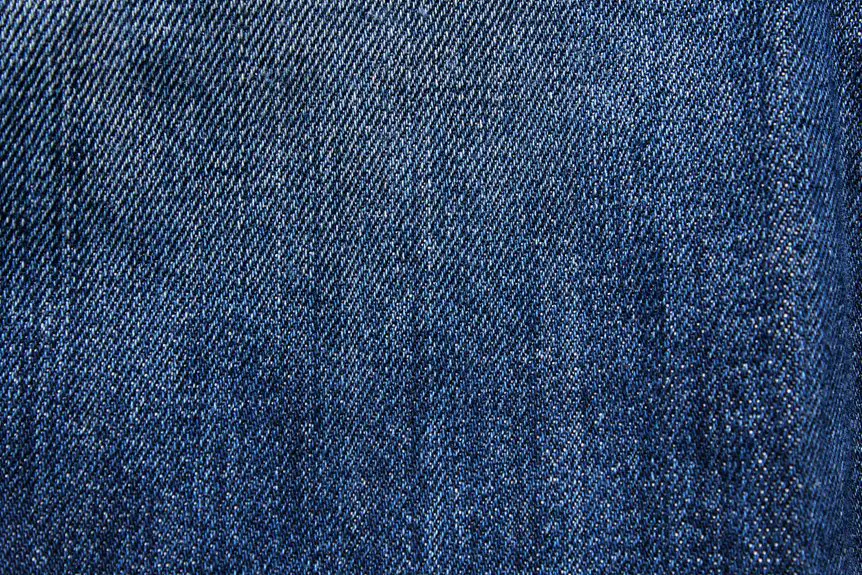Yes, Lycra and spandex can shrink, but proper care can minimize shrinkage. Washing in cold water and air drying helps maintain their shape and elasticity. Low heat drying is acceptable, but high temperatures can damage the fibers. The quality of the fabric also plays a significant role in how much it shrinks. By understanding care practices and the influences on shrinkage, you can keep your activewear in great condition. There’s more to learn about maintaining these fabrics effectively!
Table of Contents
Key Takeaways
- Lycra and spandex are designed to retain shape, experiencing minimal shrinkage with proper care.
- High-quality Lycra or spandex offers better elasticity and less shrinkage compared to poor-quality fabrics.
- Washing in cold water and air drying helps prevent shrinkage and maintains fabric integrity.
- Tumble drying on low heat is acceptable, but extreme heat can damage fibers and cause shrinkage.
- Cotton spandex blends may experience slight shrinkage after the first wash, while polyester spandex blends resist it better.
Understanding Lycra and Spandex
While many people use the terms Lycra and spandex interchangeably, it’s important to understand the distinctions between the two.
Lycra is actually a brand name for a type of spandex fiber, created by DuPont. When you wear Lycra, you’re enjoying the benefits of spandex, but with the added guarantee of the brand’s quality.
Lycra, a brand by DuPont, represents a high-quality spandex fiber, combining excellent stretch with brand assurance.
Spandex, on the other hand, refers to a broader category of elastic fibers, which can include various brands and blends.
Both materials offer excellent stretch and recovery, making them popular in athletic wear and everyday clothing.
When shopping, look for the specific fiber content to verify you’re getting the performance you desire. Knowing these distinctions helps you make informed choices about your fabrics.
Factors Contributing to Shrinkage
When considering shrinkage in Lycra and spandex garments, several key factors come into play that can impact the fit and longevity of your clothing.
First, the quality of the fabric matters; lower-quality materials may shrink more than higher-end options. Additionally, the garment’s construction affects shrinkage; seams and stitching can influence how the fabric behaves under stress.
The initial stretch of the material also plays a role; fabrics that are overstretched may not return to their original size.
Ultimately, the temperature of your environment can contribute; high heat can cause fibers to contract, leading to shrinkage.
Washing and Drying Best Practices
When it comes to washing and drying your Lycra or Spandex items, choosing cold water is key to preserving their shape.
You might also want to take into account air drying or using low heat settings to prevent shrinkage.
Cold Water Washing
To keep your Lycra and spandex garments in top shape, washing them in cold water is crucial. This method helps maintain their elasticity and color vibrancy, preventing shrinkage and damage.
Hot water can weaken the fibers, causing your favorite pieces to lose their fit. When washing, use a gentle cycle to reduce agitation, which can also affect the fabric’s integrity.
Always check the care label for specific instructions, as some blends may have unique requirements. Avoid using bleach or fabric softeners, as these can harm the fabric.
Air Drying Methods
How can you best preserve the shape and lifespan of your Lycra and spandex garments after washing?
Air drying is key. Instead of tossing your items in the dryer, gently reshape them and lay them flat on a clean, dry towel. This method helps maintain their elasticity and prevents stretching.
If you’re short on space, hang them on a clothesline or a hanger, but make sure the weight is evenly distributed to avoid distortion.
Avoid direct sunlight, as UV rays can damage the fibers over time. Instead, choose a shaded, well-ventilated area for drying.
Patience is essential; let them dry naturally to keep your favorite pieces looking great for longer!
Low Heat Settings
While you might be tempted to use high heat for washing and drying your Lycra and spandex garments, sticking to low heat settings is crucial for preserving their shape and elasticity.
High temperatures can cause these fabrics to lose their stretch and fit, leading to an unflattering look. When washing, choose a gentle cycle and cold water to minimize damage.
For drying, use the low heat setting or, better yet, air dry when possible to reduce wear and tear. Remember, heat can also lead to fading, so keeping it low helps maintain vibrant colors.
Types of Fabrics and Their Shrinkage Rates
When it comes to fabric shrinkage, not all blends are created equal.
You’ll want to contemplate how polyester, cotton, and nylon spandex blends perform under different conditions.
Each type has its own shrinkage rate, and knowing this can help you choose the right fabric for your needs.
Polyester Spandex Blends
Polyester spandex blends offer a unique combination of comfort and elasticity, making them a popular choice for activewear and everyday garments. These fabrics generally maintain their shape and resist shrinkage better than pure spandex. When you choose polyester spandex, you can expect durability and versatility.
Here’s a quick comparison of different polyester spandex blends:
| Fabric Type | Shrinkage Rate | Best Use |
|---|---|---|
| 80% Polyester, 20% Spandex | Low | Activewear |
| 90% Polyester, 10% Spandex | Very Low | Swimwear |
| 70% Polyester, 30% Spandex | Moderate | Casual clothing |
| 85% Polyester, 15% Spandex | Low | Performance gear |
Understanding these rates helps you make informed choices for your wardrobe.
Cotton Spandex Blends
Cotton spandex blends combine the softness of cotton with the elasticity of spandex, making them a favorite for comfortable, form-fitting clothing.
When it comes to shrinkage, you’ll find that these blends tend to hold their shape better than pure cotton. Typically, they might shrink a bit after the first wash, but this is often minimal.
To reduce shrinkage, it’s best to wash them in cold water and avoid high heat when drying. Air drying is ideal if you want to maintain the fit and elasticity.
Nylon Spandex Blends
Although you might think of nylon as just another synthetic fabric, its blend with spandex creates a unique combination that enhances both durability and stretch. This blend is popular in activewear, swimwear, and hosiery due to its flexibility and resilience. When it comes to shrinkage, nylon-spandex blends typically resist shrinking better than pure cotton or even some other synthetics.
Here’s a quick overview of shrinkage rates for common blends:
| Fabric Type | Shrinkage Rate |
|---|---|
| Nylon-Spandex Blend | Low (1-3%) |
| Cotton-Polyester Blend | Moderate (3-5%) |
| Pure Cotton | High (5-10%) |
Common Myths About Spandex Shrinkage
Have you ever wondered if spandex really shrinks when washed? Many people believe that spandex shrinks dramatically after a wash, but that’s not entirely true.
Spandex is designed to retain its shape, and under normal washing conditions, it usually doesn’t shrink much at all.
Spandex is engineered to maintain its shape, typically experiencing minimal shrinkage during regular washing.
Another common myth is that hot water causes spandex to shrink. While extreme heat can damage the fibers, most spandex blends can handle standard wash temperatures without significant shrinkage.
You might also hear that air drying is the only safe option. While it’s gentler, you can actually tumble dry spandex on low heat without worrying too much about shrinking.
Understanding these myths can help you care for your spandex garments effectively and keep them looking great!
Preventive Measures for Damage and Shrinkage
To prevent damage and shrinkage of your spandex garments, it’s essential to adopt proper care habits.
Always wash your spandex items in cold water and use a gentle cycle to minimize stress on the fibers. Avoid bleach or harsh detergents, as these can weaken the material.
When drying, skip the dryer and opt for air drying instead; high heat can lead to shrinkage. If you must use a dryer, select a low heat setting.
Additionally, store your spandex pieces flat or hung, avoiding folding them to prevent creases.
Finally, always read the care label for specific instructions.
The Role of Fiber Blends in Shrinkage
When you mix spandex with other fibers, it can greatly affect how your garments respond to washing and drying, particularly regarding shrinkage. Blending spandex with materials like cotton, polyester, or nylon can create different outcomes. For instance, while cotton provides softness, it can shrink more than synthetic fibers. Knowing this helps you choose the right blend for your needs.
| Fiber Type | Shrinkage Potential | Feel |
|---|---|---|
| Cotton | High | Soft |
| Polyester | Low | Smooth |
| Nylon | Moderate | Durable |
Understanding these combinations can help you maintain the fit and feel of your favorite garments, ensuring you enjoy them for years to come.
The Importance of Fabric Quality
Fabric quality plays an essential role in how garments perform over time, particularly regarding durability and shrinkage. When you invest in high-quality Lycra or Spandex, you’re more likely to experience better elasticity and less shrinkage after washing.
Poor-quality fabrics can easily lose their shape, leading to discomfort and a shorter lifespan. You’ll notice that premium materials often feature better stitching and construction, which contributes to overall performance.
Choosing garments made from reputable brands can help you avoid issues with shrinkage and maintain the fit you love. Ultimately, when you prioritize fabric quality, you guarantee that your activewear not only looks great but also stands the test of time, making your investment worthwhile.
Long-Term Care for Lycra and Spandex Garments
Although caring for your Lycra and Spandex garments might seem straightforward, it’s crucial to follow specific guidelines to guarantee they maintain their shape and elasticity over time. Here are some essential care tips to keep your favorites looking great:
| Care Tips | Do’s and Don’ts |
|---|---|
| Washing | Do use cold water; Don’t use bleach |
| Drying | Do air dry; Don’t tumble dry |
| Ironing | Do use low heat; Don’t iron directly |
| Storage | Do hang or lie flat; Don’t fold tightly |
| Regular Maintenance | Do check for wear; Don’t ignore repairs |
Frequently Asked Questions
Can I Iron Lycra or Spandex Fabrics?
Ironing Lycra or Spandex isn’t recommended; you risk damaging the elasticity. Instead, hang or lay items flat to dry. While heat might smooth wrinkles, it can also ruin your favorite stretchy pieces. Choose wisely!
How Do I Know if My Spandex Has Shrunk?
To know if your spandex has shrunk, check the fit. If it feels tighter than before or struggles to stretch, it’s likely shrunk. Compare it to similar garments for a better assessment.
Is It Safe to Use Fabric Softener on Lycra?
Using fabric softener on Lycra’s like adding oil to water; it can create issues. While it might make things feel softer, it can also reduce elasticity and damage the fabric over time. Avoid it for best results.
Can Sunlight Cause Lycra or Spandex to Shrink?
Sunlight can indeed affect Lycra or Spandex. Prolonged exposure to UV rays breaks down the fibers, potentially leading to shrinkage over time. To maintain their shape, keep your garments out of direct sunlight whenever possible.
Will Storing Spandex in a Hot Place Cause Shrinkage?
Storing spandex in hot places can be risky; studies show heat can degrade its elasticity over time. So, keep your spandex in cool, dry areas to maintain its shape and prevent any unwanted shrinkage.
- Wearing White Corduroy Pants in Winter: Tips and Style Ideas - July 4, 2025
- Clean Corduroy by Hand: Essential Tips for Fabric Care - July 4, 2025
- Styling Tips: What to Wear With White Corduroy Pants - July 4, 2025







